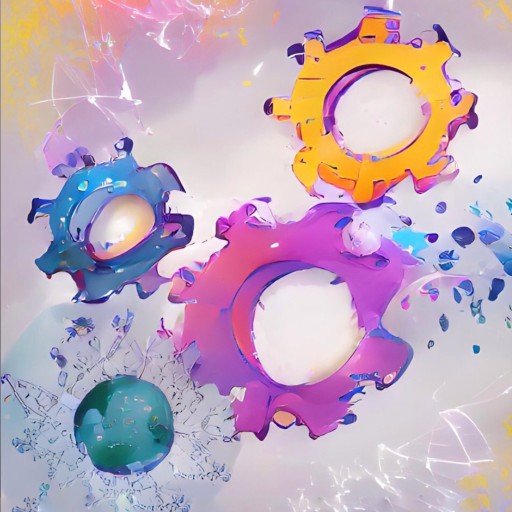The third pillar of a third generation blockchain - and probably the most important - is sustainability.
The concept of sustainability can be broken into two components:
1) How do we pay for things?
Crypto currencies are not companies. Even if a cryptocurrency is a security, it’s still somewhat decentralized. It’s still infrastructure. It’s much more like roads and bridges; it’s much more like TCP/IP and their protocols. So when you talk about a protocol that’s open-source, the idea is to minimize the operational cost of that protocol. Things like putting tolls or intellectual property on the protocol, even if it’s well intended, for example to fund a foundation, are likely to be less competitive than other, completely free protocols. As a consequence, it’s very difficult to figure out exactly how one ought to maintain and pay for these systems in the long term.
One way is the patronage model. This is where a corporation volunteers its developers to develop and sustain the software. This can work in the short term, but the challenge is that those developers end up having a huge amount of influence over the evolution and growth of the system. One can argue that a patronage model will lead to centralization of power into the hands of a few companies that want to modify the protocol in a certain direction. So patronage may not be the best way.
ICOs [Initial Coin Offerings - The blockchain version of an IPO] - are another interesting way. An ICO is like a quick jolt of energy. They provide a lot of capital, and if there’s good governance and good people behind it, it can result in the creation of a great product. However the problem is that an ICO does not provide continuous funding. Rather, it’s a large flood of money in the very beginning to build something. No matter how large that pile of money is - it’s finite. It eventually runs out. Furthermore, the token itself may be unnecessary; it may not provide any new utility, and thereby splits value away from the principal network.
In answer to these quandaries, we have the notion of a Treasury. A Treasury is where a blockchain is able to print money and put some of that money into a decentralized bank account. That decentralized bank account is funded through inflation. The first to pioneer the inflation model was Bitcoin; every time a block is produced, more coins are produced. It started with 50 coins per block, and then it decreased by a factor of two every four years. Now we’re down to 12 and a half coins produced per block, and all of that goes to the miner. With the Treasury model, instead of having all of it go to the miner, some of it actually goes into this decentralized bank account. Then, there is a democratic method to vote on funding proposals. So someone can submit a ballot to the Treasury, and then the token holders can vote. If it gets enough votes, that ballot will be approved and the Treasury will open up and pay for the proposal.
This model is actually incredibly robust, because it has a way of being refilled on a continuous basis. It’s directly proportional to the overall size of the currency, so as the currency grows, it has more and more resources available which in turn can be spent to grow the currency. So there’s a positive feedback loop. It also has a democratic process connected to the system that allows stakeholders in the system to start having discussions about priorities, and what work should get funded:
- Someone may say “I’m a developer, and I want to sustain the system”.
- Someone else could say, “I’m a marketer, and I want to market the system and create content videos.”
- A scientist may want to write a new protocol to improve the existing one. Maybe it’s a new privacy model, or a bit more security, or a bit more anonymity.
- An application developer may want to bring state channels to Ethereum.
Under the Treasury model, the token holders get to choose: What do they think is a higher priority, further development, or marketing? Instead of going to the National Science Foundation, or the European Union to try to get a traditional research grant, scientists of the future may be able to use the Treasury model to propose funding for research.
So with the Treasury model, token holders have a mechanism to provide funding for new development within a single ecosystem. That’s a really exciting proposition, but there are important challenges to consider:
- There must be a proper and fair voting system.
- There must be incentives to vote and participate (yes, even beyond the notion that it’s for a common good!)
- There must be an easy way to submit ballots.
- There must be a way for reasonable ballots to have higher precedence over absurd ballots.
- It must be completely decentralized and not require centralized governance.
So a Treasury is quite hard - but we at IOHK are quite interested in this model. We think this is one of the single most important things we can bring to sustainability because it’s embedding something within the system itself that allows it to pay its own bills.
We’ve started our research by examining the voting system; we’re looking into using a modification of liquid democracy and then combining that with an incentivized Treasury model. We are developing this in a joint partnership with researchers at Lancaster University and with some of our personnel from Ukraine. [Beyond voting, research will continue into other areas of the model] Our hope is to develop a “Reference” Treasury model that’s abstracted from any single cryptocurrency. It’s just a module that can be plugged into any cryptocurrency, such as Ethereum or Cardano. The hope is that the system will have a fairly sophisticated way of balancing the needs and incentives of token holders with the needs of those seeking funding in a reasonable way.
This is an inexact science, and requires quite a bit of iteration. This is why we’re trying to construct this system in a modular capacity so that the treasury system can be upgraded independent of the protocol itself. We should be publishing a paper fairly soon [Q4 2017] and our hope is to roll out the first generation of the reference treasury model into Cardano by about the middle part to the end of 2018.
2) Where should we go?
Cryptocurrencies are living creations; it’s not the case that once you’ve written the code it’s finished and done. There is always going to be a version 2.0, and beyond. Blockchain protocols must be able to change:
- as technology changes
- as use cases change
- as new innovations come out
Growing with these changes can bring tremendous benefits. The problem is that in current cryptocurrencies - generation 1 & 2 - there is no canonical way of deciding which updates are the best, amongst many that have been proposed. As a consequence, irreconcilable differences develop and chains break apart. We saw this with Bitcoin and Bitcoin cash. We saw this with Ethereum and Ethereum classic. It will happen again as these systems grow in scale and value.
So let’s ask ourselves: Are there any social systems that humanity has constructed which, while they may be controversial, have maintained stability and updatability?
Constitutions are the closest notion that we have - the highest law of a country. A constitution doesn’t change too much, and they’re somewhat difficult to change. When they do change, there’s universal consensus to follow the new path, together. We don’t see a fracturing of the country into two Americas. And why? Because changing a constitution is a slow deliberate process, which people agree to follow, at least in principle. [If we treat technology protocols like a constitution, we can use similar processes to implement change, while sustaining the whole.]
Our hope is to use the same mechanics that are used in the Treasury system for approving ballots for bigger Cardano improvement proposals. So a developer can propose a SIP [System Improvement Plan], and then follow a process that allows the network to vote on whether the change should be ratified or not. This should be a slow, systematic, deliberate process that takes time and effort prior to eventual adoption.
The first generation of this technology is more about process and mechanism. It’s a meta-consideration that lives outside of the network, but relies on tools within the network: for example, the ability to do voting by stake weight.
In later versions, we’re going to explore the idea of converting a proposal into something that’s machine-understandable, similar to a formal specification of a protocol. There is this notion that maybe we can actually specify a cryptocurrency in a way that the cryptocurrency actually understands its own design. If this is possible, then it may be possible to actually verify if a client is following the specification. In other words, when someone creates new wallet software to connect to Cardano, there’s this machine-understandable, canonical notion of how Cardano ought to be configured. Clients will actually be able to self-accredit and verify if they’re actually following the protocol or not. So this is generation two and three, this idea of taking a social process and eventually mechanizing that social process in ways that give us a protocol that lives above the software. We’re very hopeful that we can use emerging techniques from programming language theory and formal verification to pursue these ends. The first micro-exam of this is going to start materializing with the formal verification of smart contracts and ensuring that they are stable and reliable. This is an area of research that we’re pursuing very vigorously at IOHK and we intend on having several publications come out throughout 2018. Our hope is that those techniques can then be raised a level, and we can begin having protocol-level descriptions of how Cardano ought to work as a full cryptocurrency stack.
In the short term however, the Cardano improvement proposal process will be completely written up by Q1 of 2018 and IOHK will begin following that process as it upgrades and iterates the Cardano protocol. Then, once our treasury voting system is in place we will make special accommodations so that every Cardano improvement proposal can go through a process of voting. We already have an upgrade system built-in; if one goes to Cardanodocs.com there’s a specification for how that system works. Later on, that system will be superseded by our new voting system that we intend on rolling out with the Treasury.
So this is sustainability in a nutshell. It is our view on how we should responsibly pay for things, and our view of how we decide where we go. As a protocol starts, there’s a lot of “founder vision” and a lot of initial philosophy. As more people come into the ecosystem, and as more hopes and dreams get invested into the ecosystem, eventually these ecosystems grow beyond their founders. So it’s incredibly important to have a process for changing the protocol in a deliberate way, that is inclusive and resistant to power brokers.
So that’s Cardano. Cardano is a third-generation protocol. It’s built with peer-review. It’s built with high assurance software standards. It’s built in Haskell - my favorite programming language. It’s built by a large, international team, which is well funded and committed to it until 2020. It’s built to be sustainable, interoperable, and scalable. This is our view of how we will get cryptocurrencies from the first million to the first billion.




No comments yet…